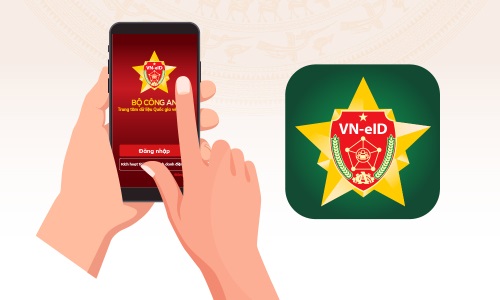1. The Beginnings of Ride-Hailing Service in Vietnam
In 2014, Viet Nam first embraced new and disruptive business with the arrival of a brand-new kind of Call Taxi Services, i.e. Grab and Uber. At the time, the Viet Nam Government was unable to cover and govern this whole new business model. This gave rise to the unfair competition between ride-hailing apps and traditional taxi operators due to the legal barriers. However, the Viet Nam Government cannot ignore considerable economic benefits derived from the ride-hailing market. Therefore, the Ministry of Transport, in 2015, cautiously approved a ride-hailing pilot program under Decision 24 to determine how the Government should interact with ride-hailing services and specifically, what taxes and how they would be imposed on ride-hailing services at the end of the pilot program.
At the end of the ride-hailing pilot program, the Viet Nam Government and other related sub-authorities have issued many policies and regulations, narrowing the gap in competition between ride-hailing companies and traditional taxis.
2. New legal framework for ride-hailing business in Vietnam
On January 17th, 2020 the Government issued a new Decree effective as of April 1st, 2020 to give rise to an official playground for ride-hailing services. Decree 10 is the result of an effort of the Viet Nam Government to keep up with the practice after 04 years launching the ride-hailing pilot program. To follow Decree 10, the Ministry of Transport issued a Decision 146 guiding subjects governed by the pilot program to opt for their own form of business in conformity with the new Decree. Decree 10 classifies the automobile ride-hailing business into two main forms of business, which are as follows:
- Transport business organization;
- The business of providing a software application to assist with connection in transport (“Transport Software Organization”).
(hereinafter collectively referred to as “ride-hailing companies”).
The technology provider of a ride-hailing application shall be deemed to be a Transport Software Organization, provide that such technology provider does not directly coordinate automobile or driver and not decide transport costs. For the avoidance of confusion, the Ministry of Transport issued a circular to assist in clarifying the two above-mentioned constituent elements of a Transport Software Organization.
- Not directly coordinating automobile or driver. Decree 10 defines the words “Directly coordinating automobile or driver” as the process where an organization or individual assigns a passenger or freight transport task to a driver via the transport software application, a transport order or a transport contract. To be more clear, Circular 12 states that “assigning a driver to transport passengers or goods via software application assisting with connection in transport” means an organization or individual using the software application assisting transport connection to receive the transport request from passengers, selecting an appropriate vehicle and driver and providing information about the transport request to the driver.
Thus, the process of coordinating automobile or drivers will include the following main elements:
- Receiving the transport request from passengers;
- Analyzing the transport request to select appropriate vehicle or driver in conformity with that request of passengers; and
- Providing the information about the transport request for the appropriate drivers to carry out that request.
Therefore, the Transport Software Organization neither selects the driver nor the vehicle for the passengers.
- Deciding transport costs: The Circular 12 defines the word “deciding transport costs” as a business unit determining the transport costs to inform a passenger or directly negotiating with a passenger about the transport costs prior to undertaking a passenger trip.
It means that Transport Software Organizations under Decree 10 shall not be permitted to offer the Passengers fixed transport costs or even not propose a recommendation transport costs as it may be deemed to be a direct negotiation with the Passenger to reach a transport contract. The right as well as obligation to decide transport costs belong to the Transport Business Organization (including enterprises, cooperatives or household businesses operating an auto transport business). In return, Transport Software Organization has an obligation to provide the Transport Business Organization with the software’s interface and the tools to negotiate and decide transport costs with Passengers.
In conclusion, a technology provider of ride-hailing application shall be deemed to be a Transport Software Organization under Decree 10 once it meets the 02 (two) conditions above.
3. Controversial issues
The promulgation of Decree 10 appeared as if the clear playground for ride-hailing services in Vietnam had been formalized, the biggest controversial issue has not been addressed though. It is the legal framework for motorbike drivers involving in transport business. Notwithstanding the fact that the number of motorbike drivers involving in transport business in Viet Nam is considerably high in comparison with that of automobile drivers, the regulations on motorbike drivers are quite meager and too few to be fully and effectively applied to the practice.
So far, Circular 08 is the only legal framework governing motorbike drivers and motorbikes engaged in transport business. However, Circular 08 had been enacted 11 years ago, in conjunction with the dramatic change and development of technology, it may not be suitable to the practice anymore.
The motorbike drivers for the time being are still cooperating with the technology providers of a ride-hailing application under cooperation agreements.
4. What’s next for Ride-Hailing in Vietnam?
With the constant promulgation of regulations on ride-hailing service in 2020, the Viet Nam Government appears to come to a conclusion on how it wants to treat existing ride-hailing companies in Vietnam as transport business organizations rather than as technology companies.
In the response to the Government and the community’s concerns, the Ministry of Transport stated that the legal framework for motorbike drivers is under construction. So far, the question of what working relationship between ride-hailing companies and motorbike drivers is still pending. Will the Government view motorbike drivers as the same way as automobile drivers as employees of the transport business organization? Or will the Government remain the perspective on motorbike drivers as a partner of technology providers of ride-hailing applications under cooperation agreements as of now?
If you have any questions or require any additional information, please contact Apolat Legal – An International Law Firm in Viet Nam.
This article is for general information only and is not a substitute for legal advice.





































